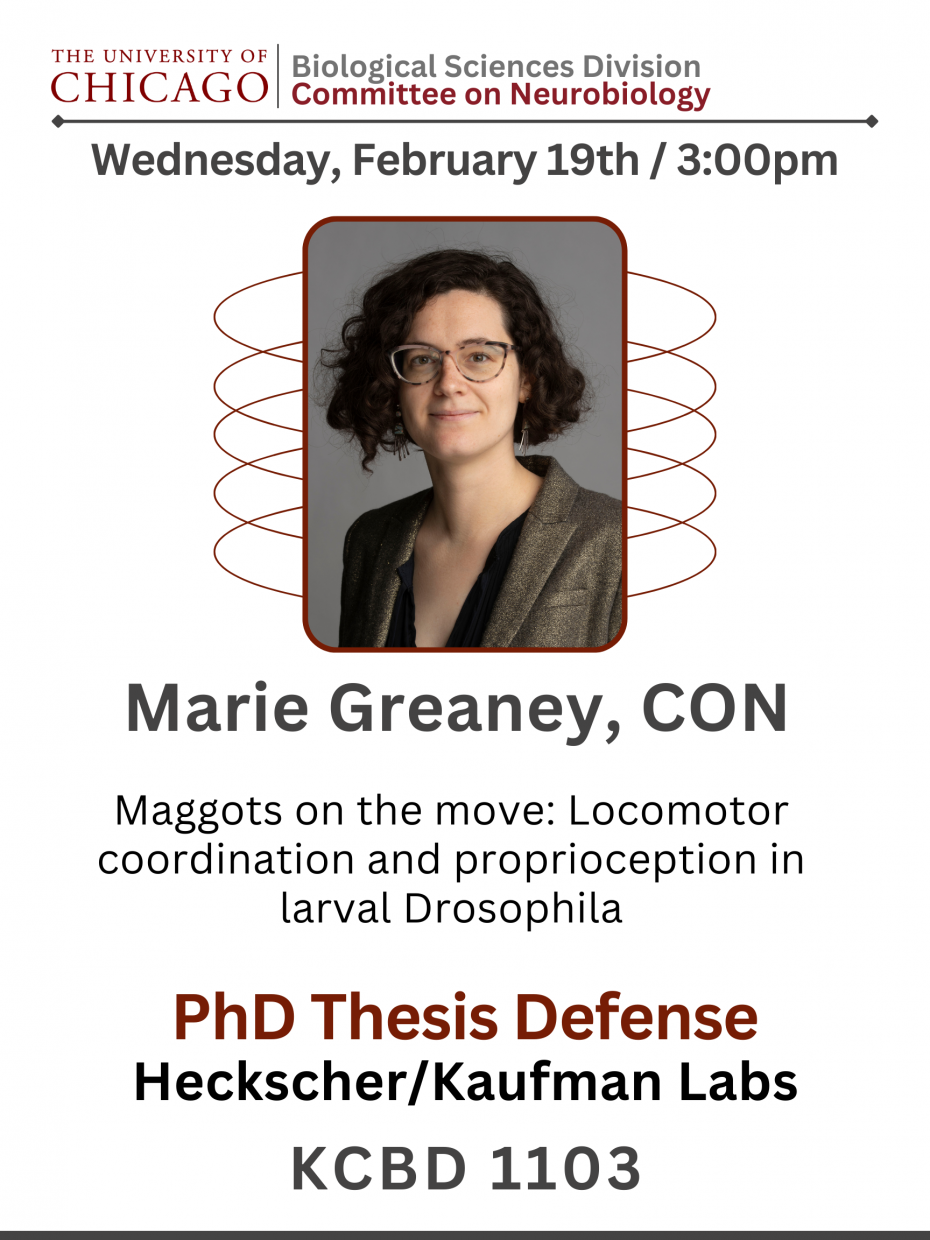
Chicago, IL 60637
United States
PhD Thesis Defense
Wednesday, February 19th, 3:00 pm
Marie Greaney, CON
Heckscher/Kaufman Labs
KCBD 1103
“Maggots on the move: Locomotor coordination and proprioception in larval Drosophila”
Abstract: Larvae of the fruit fly Drosophila melanogaster are a promising genetic model system in which to investigate how limbless animals coordinate locomotor movements across body segments. Proprioceptive sensory feedback is critical for coordinating segmental movements during locomotion, but how it is routed into central neural circuits that use it to inform movements remains unclear. On the behavioral level, it is unknown how flexible or consistent the coordination of segmental movements is across the larval body. Moreover, it remains unclear how locomotor movements relate to underlying neuromuscular drive. Both anatomical and behavioral advances are therefore needed to understand what features of larval movement are coordinated during locomotion, and how.
In this dissertation, I investigate both the anatomy of larval proprioceptive neurons and the coordination of body segments during locomotor behavior. First, I use a published larval nerve cord electron microscopy dataset and connectome to characterize features of larval proprioceptive neurons that likely affect how proprioceptive feedback is routed to central neural circuits, and how it can be used to coordinate movement. I find both segregation and overlap of proprioceptive neuron outputs in multiple central spatial domains, consistent with specific local convergence of proprioceptive subtypes that either reflects or shapes downstream connectivity. I also report features of larval proprioceptive neurons in this dataset that defy expectations for the routing and processing of proprioceptive feedback: I find almost no direct sensory-to-motor reflex connections, as well as no anatomical evidence of presynaptic gain control onto proprioceptive neurons. These results both inform our understanding of larval proprioceptive processing and highlight the potential diversity of proprioceptive processing strategies in nature, making larval Drosophila an intriguing comparator model for study of proprioception.
Next, I describe a method to simultaneously record larval locomotor behavior and its underlying muscle activity inside linear agarose channels. Leveraging this method, I analyze relationships between body segments’ contractions across many cycles of locomotion, investigate the flexibility of segmental coordination, and relate contraction to muscular recruitment. I find unexpected axial differences both among segments’ contractions and among their muscle recruitments that suggest diversity in the neural coordination of locomotion across the body. I also find more regular timing relationships among segments’ contractions than among their recruitments, indicating axial diversity in neural coordination may be partially counteracted by the biomechanics of locomotion inside channels. Finally, I find greater flexibility in the relationships between anterior as compared to posterior segments’ contraction durations, consistent with distinct behavioral roles for these groups of segments during locomotion. Altogether, in comparison with other locomotor models, these results suggest both conserved and unanticipated principles for the coordination of locomotion in larval Drosophila.